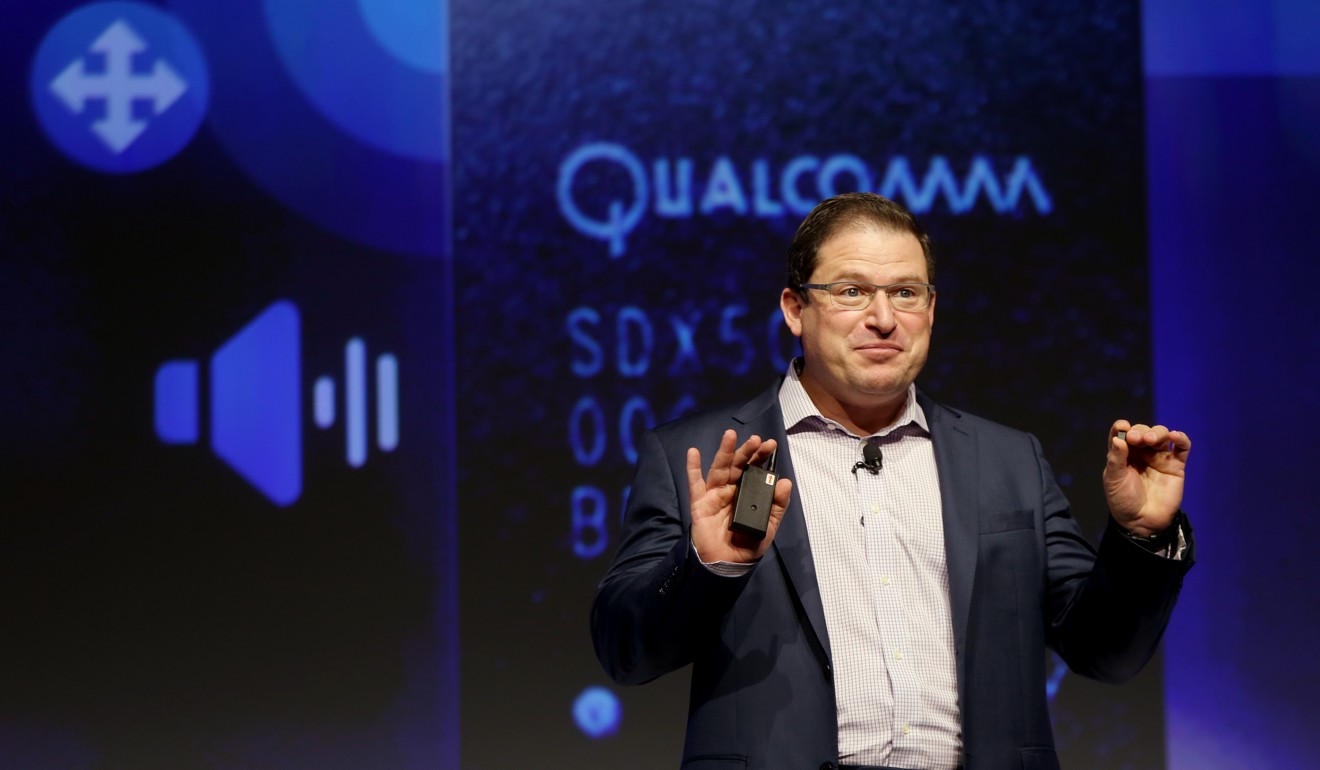
Qualcomm debuts smartphone design that will be blueprint for new 5G handsets
US mobile chip giant expects its 5G smartphone ‘reference design’ to help drive mobile network testing worldwide
Qualcomm, the world’s largest wireless chip supplier, expects to help ramp up global 5G preparations with the release of its smartphone reference design for the next-generation mobile system.
The reference design will be used by smartphone manufacturers to build 5G handsets, which mobile network operators can then deploy for their field trials of technologies that form part of the upcoming universal 5G standard.
“We feel very confident that 5G will become a reality by 2019,” said Cristiano Amon, the executive vice-president of Qualcomm Technologies, at the opening on Tuesday of the two-day 4G/5G Summit in Hong Kong.
As of September this year, there were 81 mobile network operators in 42 countries and territories that have either demonstrated or conducted tests, or are licensed to start field trials of a range of 5G-enabling technologies, according to the non-profit Global Mobile Suppliers Association.

“This major milestone and our 5G smartphone reference design showcase how Qualcomm Technologies is driving 5G NR in mobile devices,” said Amon.
5G NR, an acronym that stands for New Radio, is the name given by international authorities to the specification for a new 5G wireless interface.
We feel very confident that 5G will become a reality by 2019
Giant chip set suppliers, such as Qualcomm and Taiwanese rival MediaTek, provide smartphone reference designs to help resolve the complexity behind hardware component integration and so-called radio frequency front-end design in handsets for new mobile systems like 4G and 5G.
At the 4G/5G Summit, network operators China Telecom and KT of South Korea said they were collaborating with Qualcomm as part of their 5G preparations.
5G represents a big advance in mobile communication, in which networks will adapt to new applications, according to trade body the GSM Association.
Lee Yong Gyoo, the senior vice-president for network strategy at KT, said the company has already identified about 500 applications for 5G, including autonomous driving and remote medical services.
The International Telecommunications Union, the UN agency shepherding the development of the so-called IMT 2020 standard for 5G technologies, has said the upcoming universal specification will support: a million connected devices per square kilometre; 1 millisecond latency, or the amount of time a packet of data takes to get from one point to another; higher energy and spectral efficiency; and a peak data download rate of up to 20 gigabits per second.
The first phase of the global 5G standard is expected to be released next year and the final phase in 2019, paving the way for a wide roll-out of 5G services by mobile network operators from 2020.

